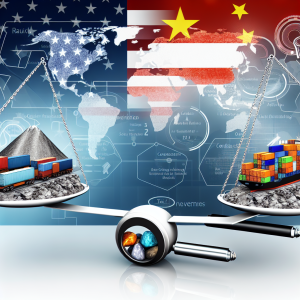US-China Trade Deal: Tariffs Stay Put—What This Really Means for Investors
Last week’s announcement of a US-China trade agreement sparked a wave of cautious optimism, but savvy investors know the devil is in the details—or, more accurately, the lack thereof. While President Trump and Commerce Secretary Howard Lutnick touted the deal, the specifics remain murky, leaving markets and investors grappling with what’s truly on the table and what’s still off-limits.
Here’s the hard truth: tariffs remain largely in place. Despite Beijing’s nod toward easing export controls—particularly on rare earth minerals and semiconductors crucial to tech supply chains—the US tariffs have not been rolled back. Treasury Secretary Scott Bessent made it clear: US tariffs on Chinese goods stand at 30%, while China’s are at 10%, with an additional 20% tariff on fentanyl-related imports still enforced. This isn’t a trade truce; it’s more of a tactical pause.
Why does this matter? For investors, tariffs are not just political chess pieces—they directly impact corporate earnings, supply chain costs, and ultimately market valuations. The ongoing tariffs mean American companies reliant on Chinese imports face sustained cost pressures, which could squeeze margins and dampen earnings growth. Conversely, Chinese exporters continue to grapple with reduced access and higher costs in the US market, which could slow export-driven growth.
Market Response: A Tale of Two Realities
The market reaction has been a mixed bag. Mainland China and Hong Kong stocks saw modest gains—CSI 300 and Shanghai Composite rose by 2.5% and 2.9% respectively in June, with the Hang Seng climbing 3.36%. These moves reflect investor hopes for further stimulus measures from Beijing and a potential easing of trade tensions.
Meanwhile, the Nasdaq Composite surged 6.57% in June, buoyed by easing geopolitical risks and growing bets on multiple Federal Reserve rate cuts. This divergence highlights a key trend: US tech stocks are benefiting from domestic monetary policy expectations, while Chinese equities remain tethered to the unpredictable trade landscape.
What’s Next? Actionable Insights for Investors and Advisors
-
Focus on Supply Chain Resilience: Investors should scrutinize companies’ supply chain strategies. Firms diversifying away from China or increasing domestic production capacity may be better positioned to weather ongoing tariff risks. For example, Apple’s recent moves to ramp up manufacturing in India and Vietnam signal a strategic pivot worth watching.
-
Monitor Rare Earths and Semiconductor Sectors: The tentative easing of export controls on rare earth minerals and semiconductors could unlock new investment avenues. These sectors are critical to global tech and defense industries, and any realignment in trade policy here can have outsized market impacts.
-
Stay Defensive on Tariff-Exposed Industries: Sectors heavily reliant on cross-border trade with China—like automotive, consumer electronics, and industrials—may face continued volatility. Advisors should recommend hedging strategies or selective exposure until tariff clarity improves.
-
Watch for Policy Shifts and Stimulus: Beijing’s potential stimulus efforts could buoy Chinese equities, but investors must remain vigilant for signs of escalation or rollback in trade tensions. According to a recent report from the Peterson Institute for International Economics, the trade war has already cost the global economy roughly $1.7 trillion in lost output—any policy shifts will ripple across markets.
- Consider Currency Implications: Ongoing tariffs and trade tensions often impact currency valuations. The Chinese yuan’s stability or volatility can affect multinational earnings and investment returns, making currency hedging a strategic consideration.
Looking Ahead: The Long Game
This trade deal is less a resolution and more a waypoint in a protracted US-China economic rivalry. Investors should prepare for a landscape where tariffs and trade restrictions are part of the “new normal” rather than a temporary disruption. The key is agility—staying informed, adapting portfolios to geopolitical realities, and identifying sectors and companies that can thrive amid uncertainty.
In sum, don’t get lulled by headlines of trade agreements. Dig deeper, assess the real-world impacts, and position your investments accordingly. The next move in this high-stakes game will likely come from subtle shifts in policy or unexpected geopolitical developments—being ahead of the curve will be the ultimate advantage.
Sources: Peterson Institute for International Economics, Bloomberg, Wall Street Journal
Source: US-China Trade: Tariffs Stay Despite Deal – Eyes on Rare Earths and Deal Commitment

